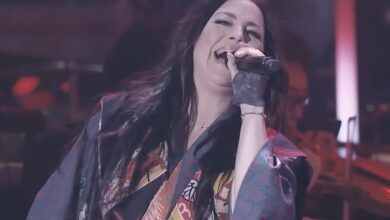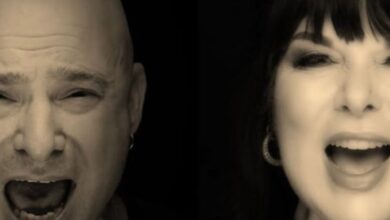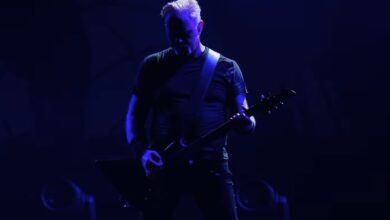Judas Priest Unleash “Painkiller” at Rockfest 2025 in a Firestorm of Metal Glory
The night in Turku crackled with electricity as Judas Priest roared into their Shield of Pain tour kickoff with the ultimate anthem, “Painkiller.” The opening chords ignited the crowd immediately, signaling this wasn’t just any festival show—it was a declaration of metal supremacy, with the band celebrating the 35th anniversary of their seminal album.
Since their 1969 origin in Birmingham, Priest has represented the heart of heavy metal—twinned guitars, leather armor, and Rob Halford’s sky-piercing vocals. Revisiting Painkiller felt like returning to a vital moment in their evolution, when they embraced speed, fury, and technical prowess, forever redefining what metal could be.
Recorded in 1990 at the secluded Miraval Studios in France, Painkiller was Priest’s aggressive rebirth. With Scott Travis’s debut unleashing doubt‑shredding double-kick drums, and the guitars of Tipton and Downing tearing through scorching riffs, the album was built to conquer—and that spirit exploded onstage in Turku.
Rob Halford looked every inch the Metal God. Dressed in leather and mirrored shades, he belted the title track with breathtaking power. At 73, his voice remains startlingly strong, hitting every scream and sustain with ease. The crowd’s roar echoed back each high note, proof that prime Priest energy transcends time.
Scott Travis, whose drumming defined the frenetic heart of Painkiller, once again stole the spotlight with that iconic drum intro. For many, those opening thumps are second only to classic rock staples like “Hot for Teacher.” On this stage, the drums still shook earth and bone, reminding everyone why his performance is legendary.
With Richie Faulkner and Glenn Tipton slicing through the riffs, the twin‑guitar attack was razor sharp. Their interplay on Painkiller’s galloping rhythms and gallant solos created a visual and sonic assault—metal at its most cinematic, most visceral, most undeniable.
Ian Hill’s bass rumbled beneath the storm, the silent anchor amid the chaos. Together, the rhythm section, guitars, and vocals locked into a savage synchrony, the kind of precision forged over decades of touring and recording—and it sounded tighter than ever in Turku.
The setlist was a treasure trove for die‑hard fans: seven Painkiller tracks resurrected, including “All Guns Blazing,” “Hell Patrol,” “Night Crawler,” and of course “Painkiller.” Also thrown in were less frequently played tracks like “Solar Angels,” along with newer material from Invincible Shield, showing Priest’s commitment to evolution, not just nostalgia.
On stage, Halford’s interaction with the audience was electrifying. He prowled the stage, flinging arms and encouraging sing‑alongs. When he roared “Painkiller” mid‑verse, the crowd mirrored him in thunderous response—it was a moment of shared ferocity, communion through volume.
Backstage, the band expressed how special this anniversary tour felt. Revisiting Painkiller was more than performance—it was reconnecting with the album’s original spirit. They spoke of pride, gratitude, and a hunger to prove they still ruled the scene, not merely a legacy act reliving past glories.
Fan‑filmed clips and reaction videos went viral within hours, buzzing across forums, TikTok, and Reddit. One poster exclaimed that Halford was “giving his best,” while others noted how the setlist’s mix of vintage and new material made the show feel like a living document of Priest’s ongoing mythology.
Critics across media praised the performance, calling it one of the strongest opening nights of any Shield of Pain tour. They highlighted the band’s unity, Halford’s undiminished vocal range, and the sustained energy that refused to taper even late into the nearly two‑hour set.
The Shield of Pain tour promises to blaze across Europe through July, heading to Norway, Germany, and concluding in London alongside Alice Cooper. But fans agree that Turku’s launch was the flame—this is a tour that knows its roots in fire, but burns with new light.
In a world full of nostalgia-heavy tours, Judas Priest stands apart. They’re not merely replaying albums—they’re re‑igniting them. Painkiller in Turku wasn’t a tribute to the past—it was a forging of the present, showing that true metal remains untamed, alive, and brutally timeless.
Turku reminded the world: Judas Priest didn’t just define metal—they still fuel it. When the final chord faded and the last roar subsided, it was clear: this is not the end of their story. It’s another explosive chapter—and the world marked it with horns held skyward.





